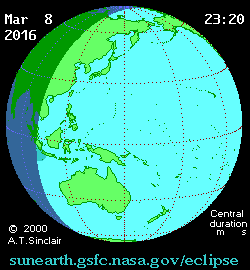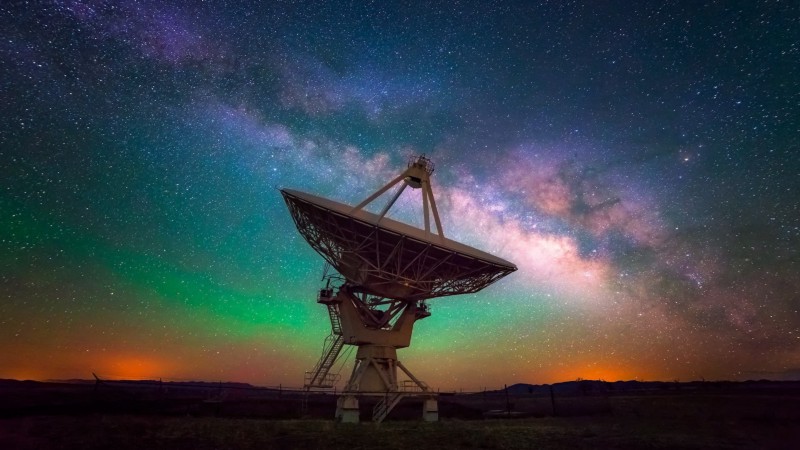Ancients from nearly every civilization interpreted eclipse as the act of evil deities and spirits. They thought of it as an indicator of war, famine, drought, and every bad fate.
They didn’t know that it could be of benefit in numerous fields, not only in science but also in history, technology, and even politics.
A solar eclipse can be of 4 types: A total eclipse is when the Moon obscures the entire disk of the Sun. A partial eclipse occurs when the Moon occults a portion of the Sun throughout the entire solar eclipse.
Annular eclipse occurs when the Moon occults the Sun but leaves a thin ring of the Sun’s disk visible around itself. This takes place when the Moon is at the farthest point of its orbit around Earth, referred to as the Aphelion. (Conversely, when the Moon is at the nearest point in its orbit, it is referred to as the Perihelion.)
The fourth and last type is the hybrid eclipse, seen in some locations on Earth as total while in others as annular, due to the curvature of Earth and the movement of the Moon between the farthest and the nearest points on the side edge of its orbit.
How rare are hybrid solar eclipses?
Of the 11,898 solar eclipses listed over 5,000 years from 1999 BC to 3000 AD in Fred Espenak’s Five Millennium Catalog of Solar Eclipses, only 569, or 4.8%, are hybrids.
Moreover, although at least two, and up to five, solar eclipses occur each year, total solar eclipses don’t recur in the same location on Earth except every 370 years.
Variety of Benefits

Solar eclipses, especially the total one of the May 29th, 1919, proved the Gravitational Lensing phenomenon Albert Einstein predicted in his General Relativity Theory.
During this eclipse, the positions of background stars near the Sun were used to prove that light waves bend as they reach bodies with weight in SpaceTime due to gravity.
Many physicists believe that the phenomenon of the solar eclipse, especially the totality phase, is firmly interlinked with several gravitational phenomena.
Studying the solar eclipse phenomenon and calculating whether we expect its occurrence accurately or not also helps us verify our ability to predict celestial orbits and factors of celestial mechanics in outer space.
We depend on such studies in launching satellites, space probes, and other equipment we put in orbit around Earth.
Similarly, solar eclipses help us calibrate our universal timing, leading to benefits in Global Positioning System (GPS) fields by accurately connecting artificial satellites in orbit to GPS terrestrial stations located on Earth.
This means that the continuous observation of solar eclipses could prevent you one day from getting lost.
In studying the Sun, total solar eclipses are the only way to study and observe the Solar Corona perfectly.
Although scientists have succeeded in artificially recreating solar eclipses using the invention of Coronagraphs (telescopic attachments that block out direct light from the Sun), the results through natural total solar eclipses are better.
Additionally, solar eclipses are vitally helpful in studying and observing several solar atmospheric phenomena such as solar flares, coronal loops, coronal ejections, solar prominence, and solar spicules. Scientists study these phenomena to learn whether they affect our climate or not.
Observing solar eclipses could be highly beneficial meteorologically, as there is a connection between the decrease of solar thermal, light, and even sound radiations during the eclipse and the atmosphere of Earth.
Furthermore, studying the history of solar eclipses and calculating the cycles of modern and future ones give us clues about specific dates and certain historical events we would like to calculate.
For example, drawings on Ancient Egyptian walls and in discovered papyrus documents depicting constellations and solar eclipses help scientists to identify important dates of wars, deaths, and crownings.
Partial solar eclipses, in particular, are also useful in Radioastronomy. As with Radio telescopes (RTs), we could study the important phenomenon of solar storms in detail. These storms can damage satellites and could harm our technological development.
Mind Blowing Facts
Interestingly, the solar eclipse phenomenon is expected to cease to exist in 600 million years as the Moon keeps moving farther away from the Earth by 3.8cm every year.
Accordingly, after 600 million years, the Moon won’t be able to cover the disk of the Sun because it will be distant from the Earth and so will appear smaller, making its shadow cone unable to reach the Earth.
And don’t think that Earth is the only planet blessed with witnessing this phenomenon. Solar eclipses actually occur on six of the eight solar planets and the dwarf planet Pluto. Stellar eclipse phenomena also take place between Binary Stars.
To enjoy solar eclipses, one has to be careful to use the right protection and avoid looking directly at it with the naked eye.
During solar eclipse, sunlight entering your eyes decreases because of the occultation. Therefore, the eye pupil widen its diameter to let in more light.
But while looking at the Sun’s corona or during the sudden flashlight caused by the solar eclipse, the eye pupil gets more light than needed while being wide open, which causes the retina to be burnt to blindness without giving any indication of pain to the spinal cord because the retina doesn’t have pain fibers.
So don’t stare at the eclipse with your naked eyes or even use sunglasses. Instead, use sun filters or special Eclipse Glasses.
Note: The article is written by Islam Sulieman, a former assistant editor of the page.
References:
- 2011 Agenda of the National Research Institute of Astronomy & Geophysics, Helwan, Egypt. (NRIAG).
- 2011 Celestial Agenda of the International Astronomical Union (IAU), Paris, France.
- NASA Eclipses Website.
- Working Group on Solar Eclipses of (IAU) International Astronomical Union.
This article is from our archive, originally published on an earlier date, and highlighted now for its importance


